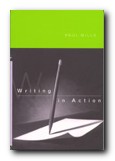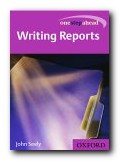how to write for popular print publications
You don’t have to be a journalist to read this book. Anyone with an interest in improving their writing skills and developing a sense of good style will find it useful. Wynford Hicks takes a no-nonsense, sleeves rolled up approach to writing for journalists which has no time for preciousness. It’s based on the supposition that you simply have to get down to the task, start writing, and you must be prepared to hack around and edit what you produce. He starts logically enough with how to introduce stories – how to grab a reader’s attention. There’s lots of advice on the structure of news reporting, plus tips on clarity, consistency, and avoiding cliché.
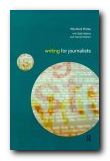 This is followed by a chapter on writing feature articles which shows you how to keep readers interested – how to stay bright and fresh in print. He also emphasises the importance of adapting your style to suit the publication. Almost every point is illustrated with an example drawn from newspapers or popular magazines. This brings the instructions to life, but you have to put up with a lot of the ‘celebrity profile’ writing that clogs Sunday supplements.
This is followed by a chapter on writing feature articles which shows you how to keep readers interested – how to stay bright and fresh in print. He also emphasises the importance of adapting your style to suit the publication. Almost every point is illustrated with an example drawn from newspapers or popular magazines. This brings the instructions to life, but you have to put up with a lot of the ‘celebrity profile’ writing that clogs Sunday supplements.
His main focus is on how to write a news story which is informative and interesting for readers. But he also includes tips on feature writing – from agony columns to profiles and product round-ups to obituaries. There’s also a chapter on how to research, structure and write reviews. He ends with a cluster of advice tips related to good style – and how to cultivate it. There’s also a useful glossary of the jargon of journalism.
This book will be useful to anybody who wants to develop a feel for what is required in popular journalism. It can hold its own alongside Harold Evans’ Essential English for Journalists or Keith Waterhouse’s Waterhouse on Newspaper Style in this respect. General readers meanwhile can pick up useful tips from the professionals.
© Roy Johnson 2008
Wynford Hicks, Writing for Journalists, London: Routledge, 2nd edition 2008, pp.208, ISBN: 0415460212
More on journalism
More on creative writing
More on writing skills
More on publishing
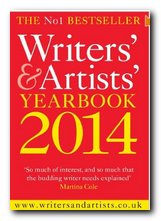 The Writers’ and Artists’ Year Book
The Writers’ and Artists’ Year Book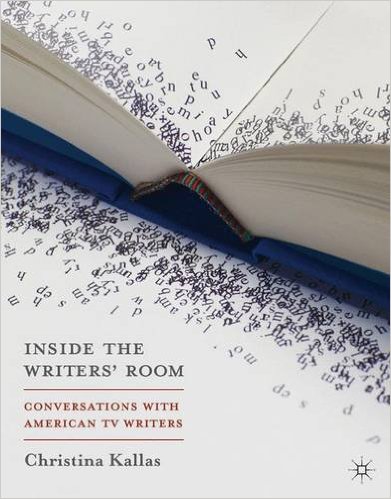

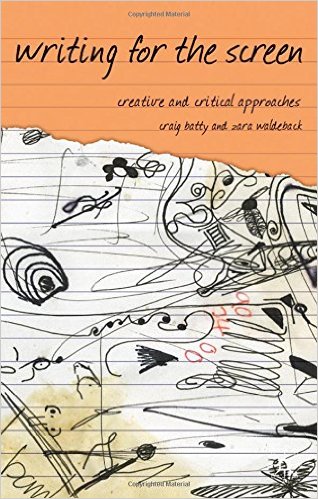
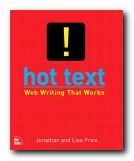 Hot Text: Web Writing that Works
Hot Text: Web Writing that Works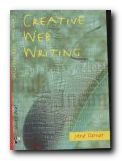 Creative Web Writing
Creative Web Writing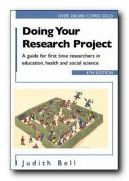 Doing Your Research Project: A Guide for First-Time Researchers in Education and Social Science is a best-selling UK guide which covers planning and record-keeping, interviewing, reviewing ‘the literature’, questionnaires, and writing the final report. Even if you are studying a subject other than education or social science, this is a wonderfully helpful guide on organising your ideas and your writing at research level. It’s a model of clarity and good sense. Now in its third edition – and deservedly so. Highly recommended.
Doing Your Research Project: A Guide for First-Time Researchers in Education and Social Science is a best-selling UK guide which covers planning and record-keeping, interviewing, reviewing ‘the literature’, questionnaires, and writing the final report. Even if you are studying a subject other than education or social science, this is a wonderfully helpful guide on organising your ideas and your writing at research level. It’s a model of clarity and good sense. Now in its third edition – and deservedly so. Highly recommended.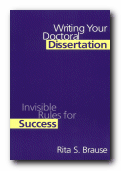 Writing your Doctoral Dissertation: Invisible Rules for Success is a US guide to writing at post-graduate level which uses practical examples, is strong on planning, and offers advice on negotiating the process of research – from making an application to submitting a dissertation. It’s also good on the issue of selecting a research topic and developing it into a feasible project. One of the features which has made this a popular choice is that it offers tips from former students on the problems they have faced in doing research – and how they have overcome them.
Writing your Doctoral Dissertation: Invisible Rules for Success is a US guide to writing at post-graduate level which uses practical examples, is strong on planning, and offers advice on negotiating the process of research – from making an application to submitting a dissertation. It’s also good on the issue of selecting a research topic and developing it into a feasible project. One of the features which has made this a popular choice is that it offers tips from former students on the problems they have faced in doing research – and how they have overcome them.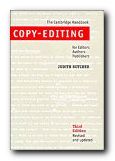 If you have any serious intention of preparing text for publication, then Copy-Editing: The Cambridge Handbook for Editors, Authors and Publishers is your encyclopedia on typography, style, and presentation. It has become the classic UK guide and major source of reference for all aspects of editing and text-presentation, covering every possible bibliographic detail. It also covers a wide range of subjects – from languages to mathematics and music – as well as offering tips on copyright and preparing text for electronic publication.
If you have any serious intention of preparing text for publication, then Copy-Editing: The Cambridge Handbook for Editors, Authors and Publishers is your encyclopedia on typography, style, and presentation. It has become the classic UK guide and major source of reference for all aspects of editing and text-presentation, covering every possible bibliographic detail. It also covers a wide range of subjects – from languages to mathematics and music – as well as offering tips on copyright and preparing text for electronic publication.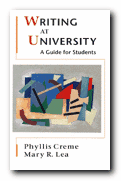 Writing at University: a guide for students is a popular UK guide to understanding questions, planning assignments, reading and note-taking, and developing arguments. It puts a lot of emphasis on the process which leads up to the act of writing, and tries to show you how to develop more confidence. Different types of writing are discussed, as well as the important skill of matching your writing to the conventions of the discipline you are studying. The approach is like that of a sympathetic counsellor.
Writing at University: a guide for students is a popular UK guide to understanding questions, planning assignments, reading and note-taking, and developing arguments. It puts a lot of emphasis on the process which leads up to the act of writing, and tries to show you how to develop more confidence. Different types of writing are discussed, as well as the important skill of matching your writing to the conventions of the discipline you are studying. The approach is like that of a sympathetic counsellor.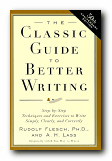 The Classic Guide to Better Writing is more-or-less what its title suggests. It’s a best-selling US guide with emphasis on how to generate, plan, and structure your ideas. It also covers basic grammar, good style, and common mistakes. The approach is step-by-step explanations on each topic, plenty of good advice on how to avoid common mistakes, and tips on how to gain a reader’s attention. Suitable for all types of writing, it well deserves its good reputation.
The Classic Guide to Better Writing is more-or-less what its title suggests. It’s a best-selling US guide with emphasis on how to generate, plan, and structure your ideas. It also covers basic grammar, good style, and common mistakes. The approach is step-by-step explanations on each topic, plenty of good advice on how to avoid common mistakes, and tips on how to gain a reader’s attention. Suitable for all types of writing, it well deserves its good reputation.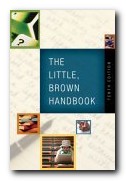 If you need just one book which will answer all your questions on writing – from punctuation to publication – then this is it. The Little, Brown Handbook is an encyclopaedic US guide to all aspects of writing. It includes vocabulary, punctuation, grammar, style, document design, MLA conventions, editing, bibliography, and the Internet. All topics are profusely illustrated and cross-indexed, and some of the longer entries are virtually short essays. It also has self-assessment exercises so that you can check that you have understood the contents of each chapter. The Swiss army penknife of writing guides. Highly recommended.
If you need just one book which will answer all your questions on writing – from punctuation to publication – then this is it. The Little, Brown Handbook is an encyclopaedic US guide to all aspects of writing. It includes vocabulary, punctuation, grammar, style, document design, MLA conventions, editing, bibliography, and the Internet. All topics are profusely illustrated and cross-indexed, and some of the longer entries are virtually short essays. It also has self-assessment exercises so that you can check that you have understood the contents of each chapter. The Swiss army penknife of writing guides. Highly recommended.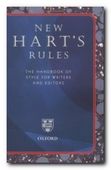 Hart’s Rules for Compositors and Readers at the University Press Oxford This is a UK classic guide to the finer points of editing and print preparation, spelling and typography. It was first written as the style guide for OUP, but quickly established a reputation well beyond. There’s no hand-holding here. Everything is pared to the bone. the centre of the book deals with ‘difficult’ and irregular spellings. A masterpiece of compression, it is now in its thirty-ninth edition. This is one for professionals rather than student writers.
Hart’s Rules for Compositors and Readers at the University Press Oxford This is a UK classic guide to the finer points of editing and print preparation, spelling and typography. It was first written as the style guide for OUP, but quickly established a reputation well beyond. There’s no hand-holding here. Everything is pared to the bone. the centre of the book deals with ‘difficult’ and irregular spellings. A masterpiece of compression, it is now in its thirty-ninth edition. This is one for professionals rather than student writers.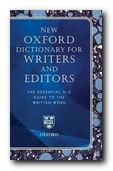 The Oxford Dictionary for Writers & Editors . This is a specialist dictionary for writers, journalists, and text-editors. Unlike most dictionaries, it does not offer explanations of the words meanings. It deals with problematic English and foreign words, offering correct spellings and consistent usage in the OUP house style. By concentrating on difficult cases, it saves you a lot of time. The latest edition also includes American spellings. Strongly recommended.
The Oxford Dictionary for Writers & Editors . This is a specialist dictionary for writers, journalists, and text-editors. Unlike most dictionaries, it does not offer explanations of the words meanings. It deals with problematic English and foreign words, offering correct spellings and consistent usage in the OUP house style. By concentrating on difficult cases, it saves you a lot of time. The latest edition also includes American spellings. Strongly recommended.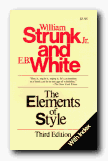 The Elements of Style. This is an old favourite – a ‘bare bones’ guidance manual which cuts out everything except the essential answers to the most common writing problems. It covers the elements of good usage, how to write clearly, commonly misued words and expressions, and advice on good style. The emergency first-aid kit of writing guides. It’s very popular, not least because it’s amazingly cheap. Suitable for beginners. There’s an online version available if you do a search – but the cost of a printed version will pay dividends.
The Elements of Style. This is an old favourite – a ‘bare bones’ guidance manual which cuts out everything except the essential answers to the most common writing problems. It covers the elements of good usage, how to write clearly, commonly misued words and expressions, and advice on good style. The emergency first-aid kit of writing guides. It’s very popular, not least because it’s amazingly cheap. Suitable for beginners. There’s an online version available if you do a search – but the cost of a printed version will pay dividends.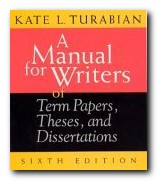 A Manual for Writers of Term Papers, Theses, and Dissertations. This is a modern American classic guidance manual for academic writing. It covers everything from abbreviations and numbers to referencing and page layout. It also includes sections showing how to lay out tables and statistics; lots on bibliographic referencing; and how to deal with public and government documents. The latest edition also includes advice on word-processing.
A Manual for Writers of Term Papers, Theses, and Dissertations. This is a modern American classic guidance manual for academic writing. It covers everything from abbreviations and numbers to referencing and page layout. It also includes sections showing how to lay out tables and statistics; lots on bibliographic referencing; and how to deal with public and government documents. The latest edition also includes advice on word-processing.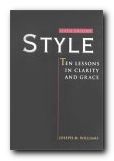 Style: Ten Lessons in Clarity and Grace. This is a popular guide – particularly amongst creative writing enthusiasts. It offers advice for improving your writing – by putting its emphasis on editing for clarity, creating structure, and keeping the audience in mind. These lessons are useful for all types of writing however. It has plenty of illustrative examples and exercises, an appendix with advice on punctuation, and a good glossary. Recommended.
Style: Ten Lessons in Clarity and Grace. This is a popular guide – particularly amongst creative writing enthusiasts. It offers advice for improving your writing – by putting its emphasis on editing for clarity, creating structure, and keeping the audience in mind. These lessons are useful for all types of writing however. It has plenty of illustrative examples and exercises, an appendix with advice on punctuation, and a good glossary. Recommended.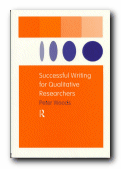 Successful Writing for Qualitative Researchers. This is one for specialist academic writing at post-graduate level. It covers all the stages of creating a scholarly piece of work – from the preparation of a project through to the completion and possible publication of the finished article. Includes sections on style, editing, and collaborative writing. It takes a positive and encouraging tone – which will be welcome to those embarking on such tasks for the first time.
Successful Writing for Qualitative Researchers. This is one for specialist academic writing at post-graduate level. It covers all the stages of creating a scholarly piece of work – from the preparation of a project through to the completion and possible publication of the finished article. Includes sections on style, editing, and collaborative writing. It takes a positive and encouraging tone – which will be welcome to those embarking on such tasks for the first time.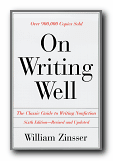 On Writing Well. This is a best-selling title, now in its sixth edition. It offers reassuring guidance from an experienced journalist on writing more effectively in a number of genres. He covers interviews, travel writing, memoirs, sport, humour, science and technology, and business writing. The approach is to take a passage and analyse it, showing how and why it works, or where it might be improved. It is particularly good on editing and re-writing.
On Writing Well. This is a best-selling title, now in its sixth edition. It offers reassuring guidance from an experienced journalist on writing more effectively in a number of genres. He covers interviews, travel writing, memoirs, sport, humour, science and technology, and business writing. The approach is to take a passage and analyse it, showing how and why it works, or where it might be improved. It is particularly good on editing and re-writing.